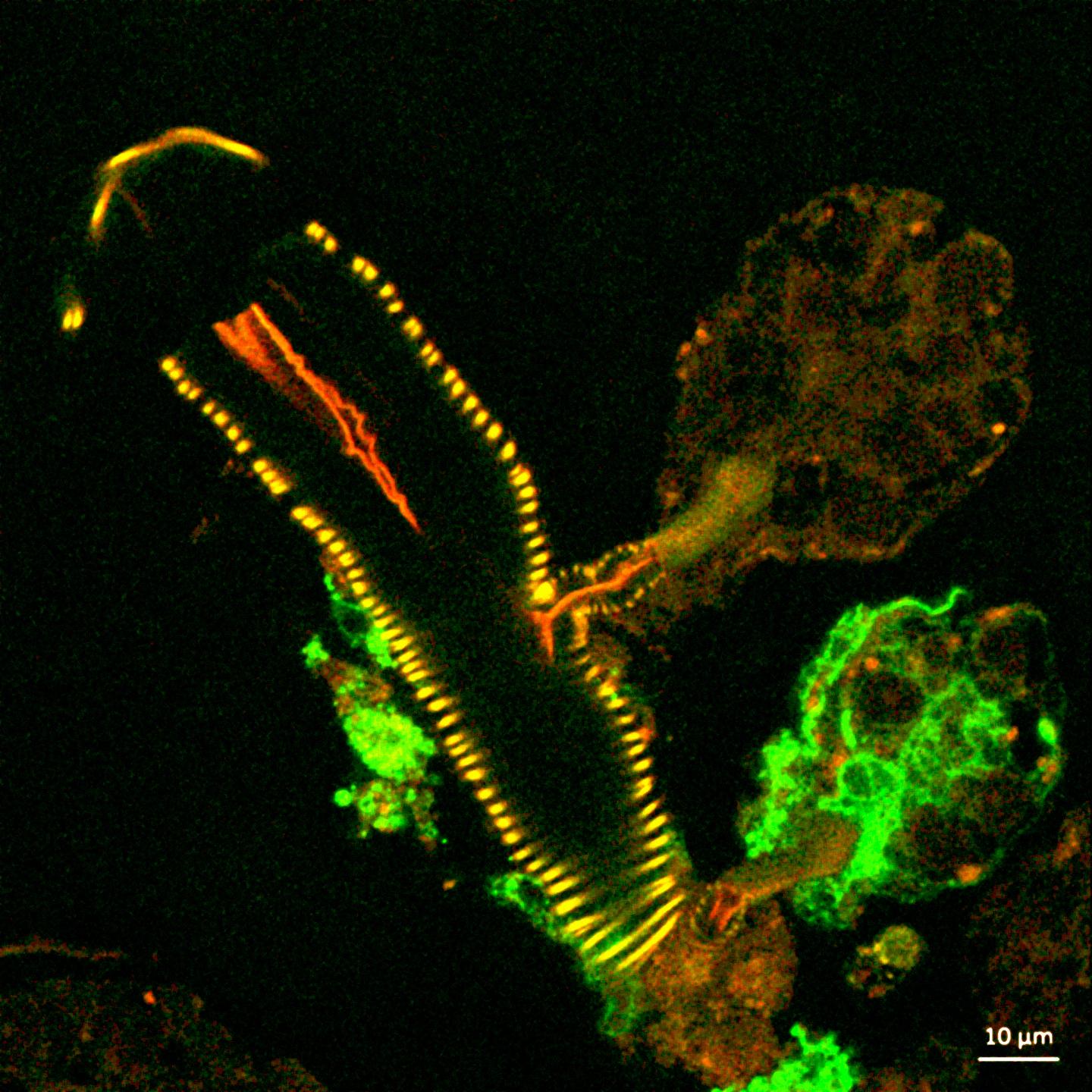
Credit: NIAID
WHAT:
The salivary glands of some tick species could become important research tools for studying how viruses are transmitted from ticks to mammals, and for developing preventive medical countermeasures. Tick salivary glands usually block transmission, but a new study conducted by scientists at the National Institute of Allergy and Infectious Diseases (NIAID) at the National Institutes of Health focuses on the role of salivary glands in spreading flaviviruses from black-legged ticks (Ixodes scapularis) to mammals. The new study, published in the journal mBio, advances the researchers’ work published in 2017 that established cultured tick organs as a model for flavivirus infection.
Flaviviruses include dengue virus, Zika virus, West Nile virus, yellow fever virus, Powassan virus and several other viruses. Powassan is the only endemic flavivirus spread by ticks in North America, where it is considered a re-emerging virus. Physicians in the United States have reported roughly 100 cases of disease in the past decade, half of them in 2016-17. Powassan virus disease occurs primarily in northeastern states and the Great Lakes region. Though disease caused by Powassan virus is rare–most people who become infected with Powassan virus do not develop any symptoms–the virus can be transmitted very rapidly. Within 15 minutes, an infected tick can transmit the virus to a person or other mammal on which it is feeding. Symptoms of Powassan virus disease can include fever, headache, vomiting, weakness, confusion, loss of coordination, speech difficulties, and seizures. If the virus infects the central nervous system, it can cause brain inflammation and meningitis. Debilitating long-term neurological problems or even death may occur.
In examining the molecular interactions between black-legged ticks and mammals, the NIAID scientists have learned that flaviviruses reproduce in specific locations in tick salivary gland cultures. This could explain why virus transmission occurs so quickly. They also noted that only certain types of salivary gland cells are infected, and they identified a specific tick gene that is involved in infection. Taken together, these findings help identify transmission pathways that potentially could be blocked with a countermeasure. The group also is assessing how viruses grow in cells of the cultured tick midgut to help identify different viruses that can grow in black-legged ticks.
###
ARTICLE:
J Grabowski et al. Dissecting flavivirus biology in salivary gland cultures from fed and unfed Ixodes scapularis (black-legged tick). mBio DOI: 10.1128/mBio.02628-18 (2019).
WHO:
Marshall E. Bloom, M.D., chief of NIAID’s Biology of Vector-Borne Viruses Section, is available to comment on this study.
CONTACT:
To schedule interviews, please contact Ken Pekoc, (301) 402-1663, [email protected].
NIAID conducts and supports research–at NIH, throughout the United States, and worldwide–to study the causes of infectious and immune-mediated diseases, and to develop better means of preventing, diagnosing and treating these illnesses. News releases, fact sheets and other NIAID-related materials are available on the NIAID website.
About the National Institutes of Health (NIH): NIH, the nation’s medical research agency, includes 27 Institutes and Centers and is a component of the U.S. Department of Health and Human Services. NIH is the primary federal agency conducting and supporting basic, clinical, and translational medical research, and is investigating the causes, treatments, and cures for both common and rare diseases. For more information about NIH and its programs, visit http://www.
Media Contact
Ken Pekoc
[email protected]
301-402-1663
Original Source
https:/
Related Journal Article
http://dx.




